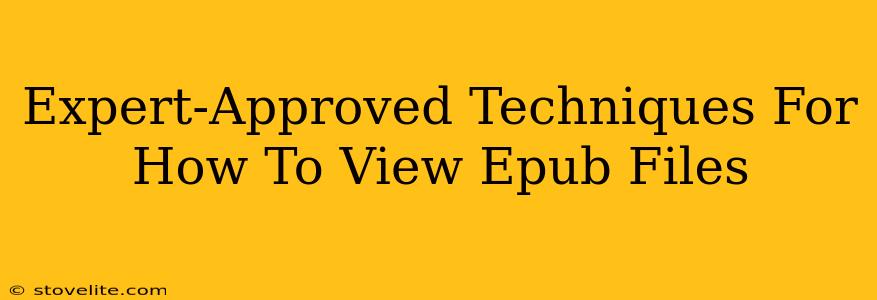Reading e-books has never been easier, thanks to the versatile EPUB format. But knowing how to actually view EPUB files can sometimes feel like a puzzle. This guide provides expert-approved techniques, ensuring you can dive into your digital library seamlessly, no matter your device.
Understanding EPUB Files: A Quick Overview
Before we dive into the how-to, let's quickly cover what an EPUB file is. EPUB (Electronic Publication) is a widely used open standard for digital books. Its adaptability allows for a great reading experience across various devices and e-readers. Unlike PDFs, EPUB files reflow text to fit different screen sizes, making them incredibly versatile.
How to View EPUB Files: Your Device-Specific Guide
The method for viewing EPUB files depends heavily on the device you're using. Let's explore the most common scenarios:
1. Viewing EPUB Files on Your Computer (Windows & macOS)
Many computers already have built-in capabilities or readily available free software to handle EPUB files.
-
Using Your Web Browser: Believe it or not, many modern web browsers (like Chrome, Firefox, Edge, and Safari) can open EPUB files directly. Simply double-click the file, and your browser might handle it automatically. If not, you might need to install a simple browser extension.
-
Dedicated EPUB Readers: For a more enhanced experience, consider dedicated EPUB readers. These apps offer features like adjustable font sizes, bookmarks, highlighting, and more. Many free and paid options are available for both Windows and macOS. Searching your app store will reveal a range of choices.
2. Viewing EPUB Files on Your Tablet or Smartphone (Android & iOS)
Smartphones and tablets are ideal for e-reading. Here’s how you can view EPUB files on these devices:
-
Built-in Reading Apps: Many Android and iOS devices come with pre-installed e-reading apps that readily support EPUB files. Check your app library - you might already have one!
-
Dedicated E-Reader Apps: Similar to computers, dedicated e-reader apps for Android and iOS offer additional features, such as customized reading modes (night mode!), dictionary lookup, and cloud synchronization. The app stores offer a huge selection catering to different preferences.
-
Using Cloud Storage: Services like Google Drive, Dropbox, or OneDrive allow you to store your EPUB files and then open them directly within their respective mobile apps. This also provides convenient access across multiple devices.
3. Viewing EPUB Files on Dedicated E-Readers (Kindle, Kobo, Nook)
Dedicated e-readers like Kindle, Kobo, and Nook offer a fantastic reading experience specifically optimized for e-books. However, the process of getting EPUB files onto these devices might vary slightly depending on the brand and model. Many devices directly support EPUB files, while others may require using a specific app or transferring files via a computer. Consult your device's manual for specific instructions.
Troubleshooting Common Issues
- File not opening? Ensure the file isn't corrupted. Try downloading it again from the source.
- App not working? Check for updates to your reader app or reinstall it.
- Incorrect file type? Double-check that the file is indeed an EPUB file (
.epubextension).
Optimizing Your EPUB Reading Experience
Beyond simply opening the files, consider these tips for a more enjoyable reading experience:
- Adjust Font Size and Style: Experiment with different fonts and sizes to find what's most comfortable for your eyes.
- Utilize Night Mode: Reduce eye strain in low-light conditions with a night mode setting.
- Create Bookmarks and Highlights: Keep track of important passages and easily return to them later.
By utilizing these expert-approved techniques, you'll be well-equipped to access and enjoy your EPUB files on any device. Happy reading!

